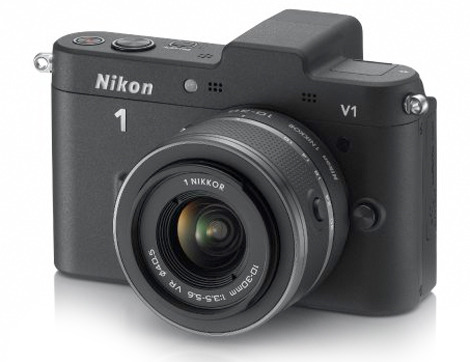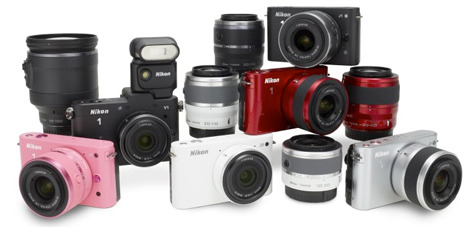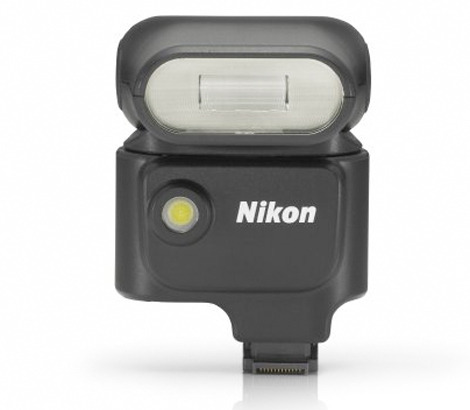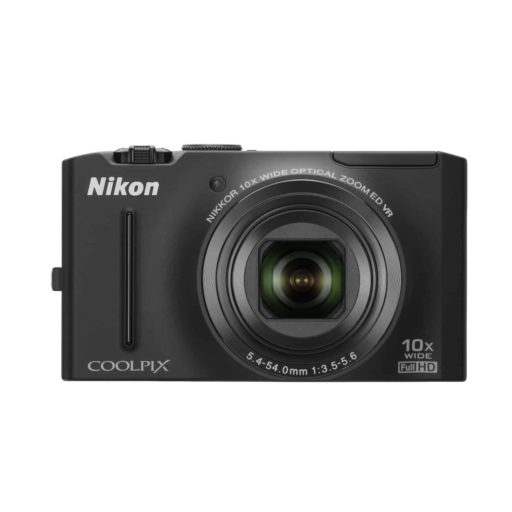Nikon staged an elaborate multinational event on late Tuesday evening to unveil the company’s long-awaited first two mirror less compact interchangeable-lens cameras and lenses. Nikon is finally going to release two mirror less interchangeable lens cameras this year, to compete with similar offerings from Olympus, Panasonic, Sony, and Pentax.
The new cameras include models J1 and V1. Both were developed to deliver fast autofocus and high-speed performance. The system, which will be titled the “1 system” and feature a new “CX” image sensor and mount (to go along with their DX and FX full-size DSLR cameras). The cameras will sport a 13.2mm x 8.8mm CMOS sensors (2.7x crop factor), larger than premium compact cameras, but offering a little more than half the sensor area found on Micro Four Thirds cameras. Then Nikon 1 System features two camera models, three lenses, and accessory GPS and flash unit for the model V1. J1 model cameras will be available in five color options.
You can pre-order from amazon from below with varities color to choose
“It’s a new market and a new category that has been started from the ground up,” said David Lee, Nikon USA senior VP. “Nikon is looking to capture young, socially connected adults who may or may not be traditional memory keepers in the home,” said Sharon Henley, Nikon product life cycle control senior manager.
The cameras will feature full HD 1080/60 i video recording with 720/60 p recording also offered, and a maximum photo shooting speed of 10 fps at full resolution and continuous autofocus. Both cameras will offer up to 1200 fps video recording for slow motion video capture and its has noise reduction tailored. The more compact V1 adds a stereo mic input and multi-accessory port for an external flash, GPS and other accessories. Nikon V1 was designed as the world’s smallest and lightest interchangeable-lens camera.
Another new feature in the cameras:
1. Smart Photo Selector
2. Offers a virtual fail-safe still image shooting system that captures 20 images with one press of the shutter
3. And then intelligently evaluates each image for focus, exposure, composition, smiling, etc., narrowing the selection down to the best five frames.
New Lens:
New lenses include a 10mm, f2.8 (27mm equivalent) pancake; a 10-30 mm, f3.8-5.6 (27-81 mm equivalent) Vibration Reduction (VR) II standard zoom; and a 10-100 mm, f4.5-5.6 (81-297 mm equivalent) VR II long zoom.
Low-light shooting:
For low-light shooting, the cameras feature a 100 to 3,200 ISO range (with one high step to 6,400), a 3-inch LCD, and a contrast-detect 73-point autofocus system that places the phase detect sensors directly on the CMOS imager for faster performance. Nikon calls it the world’s fastest AF system.
TTL metering systems:
The cameras use dual through-the-lens (TTL) metering systems, including a center-weighted matrix system with a 4.5mm circle, and spot metering system using a 2mm circle.
The cameras will be available at stores in October 20th. Retail price for each model bundled with a 10-30 mm lens is $650 for the J1 and $900 for the V1.
[ttjad keyword=”dslr-camera”]




